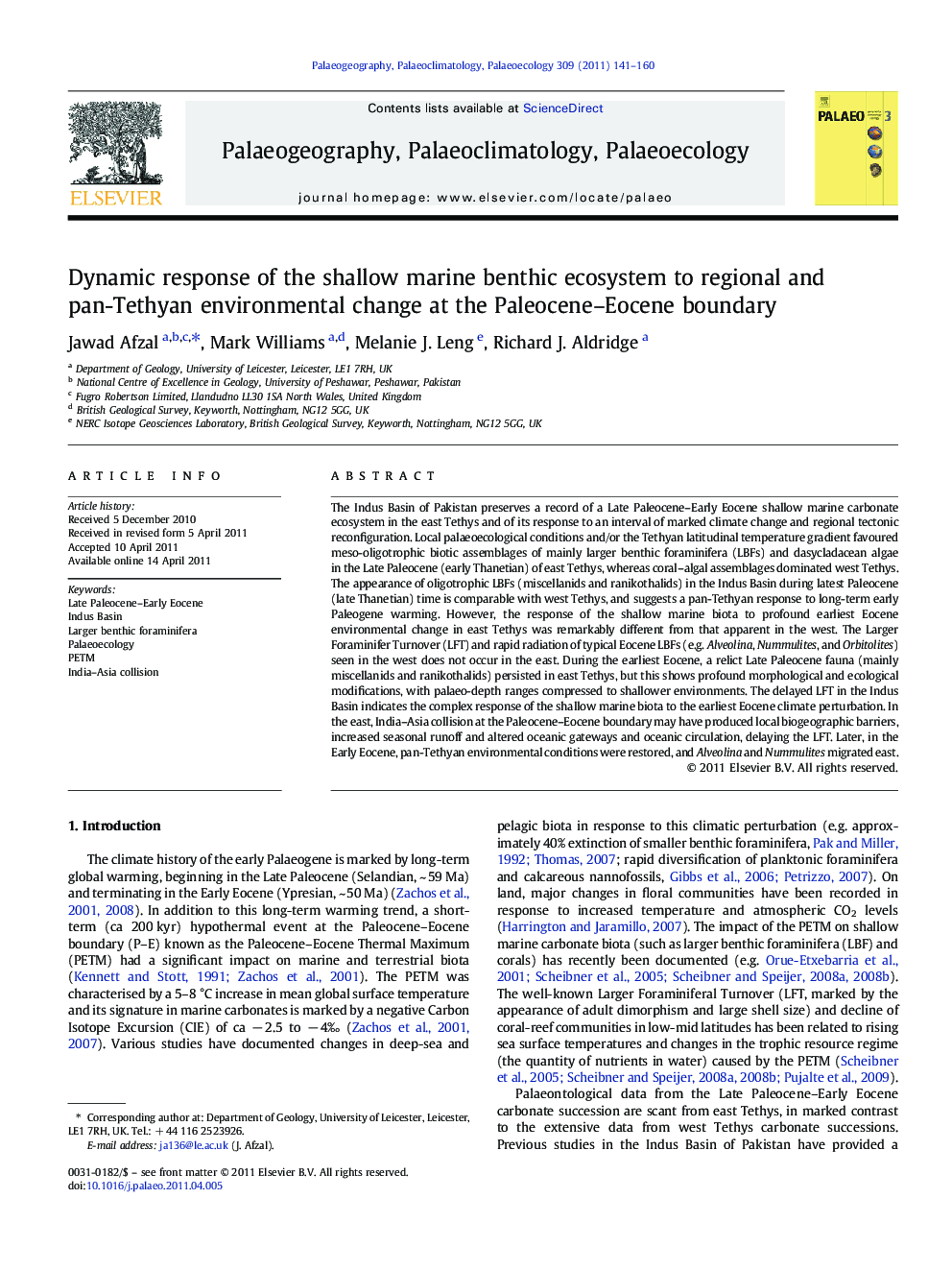| کد مقاله | کد نشریه | سال انتشار | مقاله انگلیسی | نسخه تمام متن |
|---|---|---|---|---|
| 4467244 | 1622249 | 2011 | 20 صفحه PDF | دانلود رایگان |

The Indus Basin of Pakistan preserves a record of a Late Paleocene–Early Eocene shallow marine carbonate ecosystem in the east Tethys and of its response to an interval of marked climate change and regional tectonic reconfiguration. Local palaeoecological conditions and/or the Tethyan latitudinal temperature gradient favoured meso-oligotrophic biotic assemblages of mainly larger benthic foraminifera (LBFs) and dasycladacean algae in the Late Paleocene (early Thanetian) of east Tethys, whereas coral–algal assemblages dominated west Tethys. The appearance of oligotrophic LBFs (miscellanids and ranikothalids) in the Indus Basin during latest Paleocene (late Thanetian) time is comparable with west Tethys, and suggests a pan-Tethyan response to long-term early Paleogene warming. However, the response of the shallow marine biota to profound earliest Eocene environmental change in east Tethys was remarkably different from that apparent in the west. The Larger Foraminifer Turnover (LFT) and rapid radiation of typical Eocene LBFs (e.g. Alveolina, Nummulites, and Orbitolites) seen in the west does not occur in the east. During the earliest Eocene, a relict Late Paleocene fauna (mainly miscellanids and ranikothalids) persisted in east Tethys, but this shows profound morphological and ecological modifications, with palaeo-depth ranges compressed to shallower environments. The delayed LFT in the Indus Basin indicates the complex response of the shallow marine biota to the earliest Eocene climate perturbation. In the east, India–Asia collision at the Paleocene–Eocene boundary may have produced local biogeographic barriers, increased seasonal runoff and altered oceanic gateways and oceanic circulation, delaying the LFT. Later, in the Early Eocene, pan-Tethyan environmental conditions were restored, and Alveolina and Nummulites migrated east.
Research Highlights
► We document response of shallow marine ecosystem to the PETM environmental change.
► That reveals significant differences in biotic response between east and west Tethys.
► This shows the complexity of regional biotic responses to global PETM perturbation.
Journal: Palaeogeography, Palaeoclimatology, Palaeoecology - Volume 309, Issues 3–4, 1 September 2011, Pages 141–160